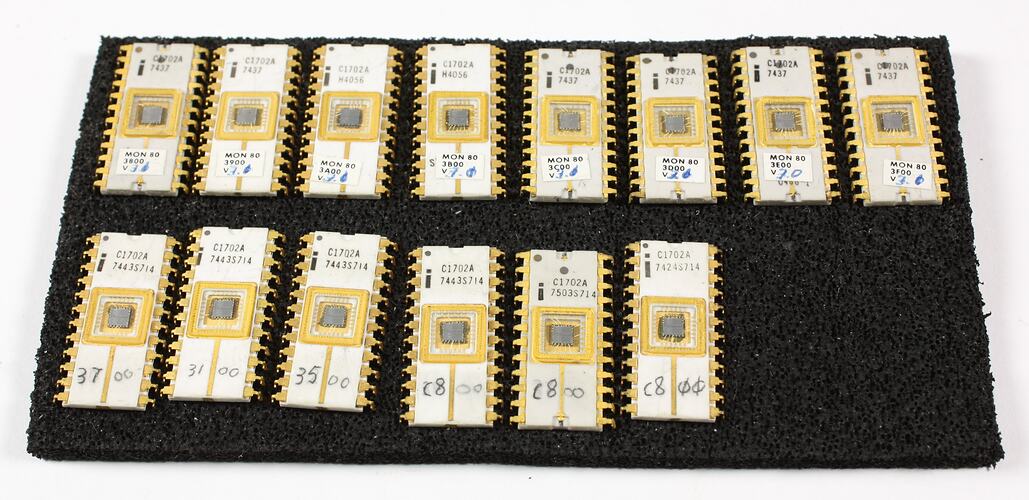Summary
Fourteen Erasable Programmable Read Only Memory (EPROM) chips, type 1702A-6, manufactured by Intel. It is used in microcomputers and can hold 256 word x 8 bits of data with an access speed of 1.5µs. The memory can be erased by exposing the chip to ultraviolet light.
Physical Description
Each chip is a white rectangular ceramic block with 24 gold-plated pins protruding (12 pins each side) along two sides. There is a central square cut-out which shows a small square metallic component (chip). There are numbers printed on the white plastic (both sides) and a number handwritten in pencil.
More Information
-
Collecting Areas
-
Manufacturer
-
Inscriptions
Printed: " i [intel corporate symbol] ", " C1702A-6 "
-
Classification
-
Category
-
Discipline
-
Type of item
-
Overall Dimensions
153 mm (Length), 87 mm (Width), 9 mm (Height)
Dimensions are for all chips grouped on foam. Each chip is 30 mm long, 15 mm wide and 7 mm high.
-
References
Manufacturer's datasheet for the Intel 1702A EPROM from Datasheet Archive website: "The 1702A is a 256 word by 8-bit electrically programmable ROM ideally suited for uses where fast turn-around and pattern experimentation are important. The 1702A undergoes complete programming and functional testing prior to shipment, thus ensuring 100% programmability. Initially all 2048 bits of the 1702A are in "0" state (output low). Information is introduced by selectively programming "1"s (output high) in the proper bit location. The 1702A is packaged in a 24 pin dual in-line package with a transparent lid. The transparent lid allows the user to expose the 1702A to ultraviolet light to erase the bit pattern. A new pattern can then be written into the device. The circuitry of the 1702A is completely static. No clocks are required. Access times from 650ns to 1.5µs are available...The 1702A is fabricated with silicon gate technology. This low threshold technology allows the design and production of higher performance MOS circuits and provides a higher functional density on a monolithic chip than conventional MOS technologies." [Link 1] - Retrieved 6 Oct 2010 (M.Vaughan)
-
Keywords
